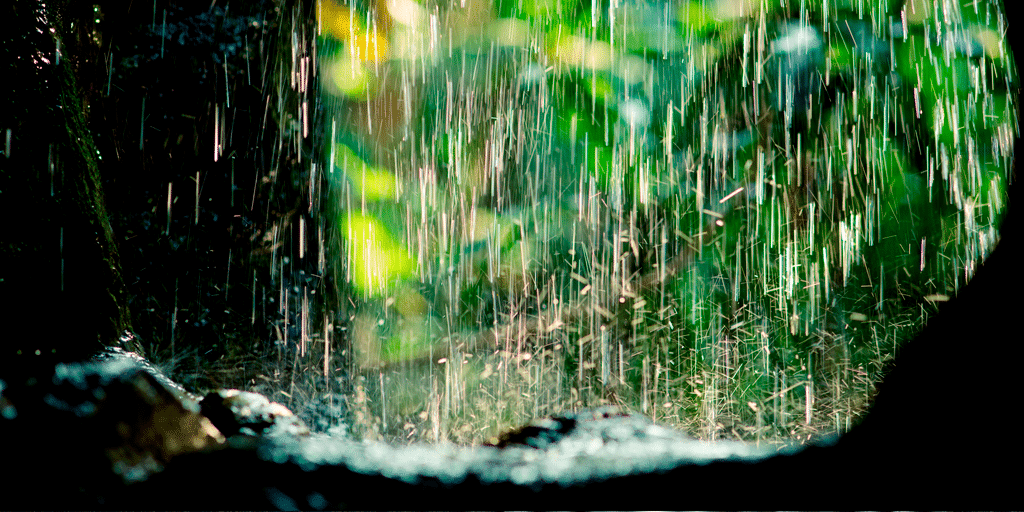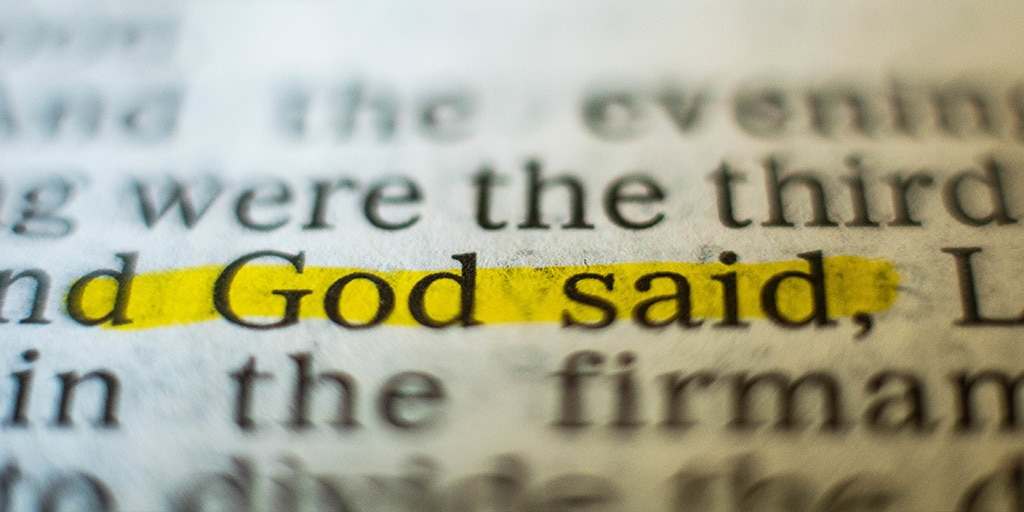Were the Days of Creation 24 Hours Long? The Structural Correlation between Genesis 1 and 2

Having examined the literary arrangement of Genesis 1 and then Genesis 2, we can now reflect on how they correspond and the significance of their development. Let’s dive into the correlation between Genesis 1 and 2
As you may recall, Genesis 1 is a highly structured account which presents days 1-3 in parallel with days 4-6. These two halves correspond not only in their intricate pattern of repeated phrases but also in their content. Together, they direct our attention to how God met the twofold need introduced in Genesis 1:2 (“the earth was formless and empty”). The structure emphasizes how God’s word brings order out of chaos and fills what is empty with life. Here is our previous chart which summarizes these parallels as they occur over days 1-6.

While the correspondence between the two halves is rather obvious for the most part, there is one parallel that appears less so: vegetation (the second pronouncement on day 3) and humanity (the second pronouncement on day 6). It is confusing because the nature of this parallel differs from the previous groupings which focus on forming a location and then filling that location with creatures or moving objects to govern that space. With this last parallel, the focus changes from a spacial location to food. This is made clear on day 6 when God directly addresses Adam and Eve to tell them about His provision of these plants as food. Moses ties God’s speech on day 6 to day 3 by repeating the same two phrases for vegetation: “seed-bearing plants” and “trees that bear fruit” (Genesis 1:11, 29).
The sudden change in the nature of this parallel should cause us to take note. Moses is up to something. He is clearly going out of his way, breaking with his previous pattern, to highlight the fact that God is the provider of vegetation. He is the one who provides us with food.
This parallel, though emphasized, is brief and left undeveloped. It is as if Moses plants a seed (a fitting analogy) which will grow as the narrative develops.
Correlation between Genesis 1 and 2
This takes us to chapter 2. Do you remember the twofold focus that structures that account? Vegetation and humanity. Interesting, huh? It is the same as the culminating parallel of days 1-3 and 4-6.
This unique parallel, which almost seems out of place in chapter 1, becomes the focus of chapter 2. There Moses retells the creation account, now focusing in on the final parallel of days 3 and 6.
In case you missed the last article within this series, or it feels a little foggy, here is quick refresher on the structure of Genesis 2. It goes something like this:

After introducing this framework, God’s solution is then repeated in verse 8 and then expanded upon in verses 9-25 (verses 9-14 focusing on vegetation and water; verses 15-25 focusing on humanity working in the garden).
So what does Moses want us to see as he returns to develop this theme in chapter 2? To answer this, we need to reflect upon the significance of the new details he gives us. Here are two points we can glean.
1) God is the provider of rain.
When Moses returns to develop the theme of vegetation, he takes it in a new direction which focuses in on God’s provision of rain. Previously, rain was not on the radar. The focus was on the power of God’s life-giving word. Vegetation emerged because God spoke, “Let the land produce vegetation” (Genesis 1:11).
Now, Moses presents the lack of all wild vegetation based on this reason: “for the Lord God had not sent rain on the earth.” After reading Genesis 1, this explanation seems a little odd. Wouldn’t the simplest explanation be that God just had not yet created plants? Why mention the lack of rain if dry land hadn’t even existed for a day? We will look at this further in the next article when we consider the timing of events. For now, we need to consider the theological significance of Moses focusing in on God’s provision of rain.
For most of us today, rain isn’t that big of a deal and the truth that God has always been the provider of rain isn’t all that life-altering. However, this would have been a huge deal to the Israelites. For in the land which God was giving them, rain equaled life. One’s food for the year was dependent upon an adequate rainy season. Unlike Egypt which had rivers to continually irrigate crops, the land of Israel was entirely dependent upon God’s provision of rain. Israel was to look to Him as their sole provider.
To see the centrality of this theme, look at how God addresses it in Deuteronomy 11:10-17.
“The land you are entering to take over is not like the land of Egypt, from which you have come, where you planted your seed and irrigated it by foot as in a vegetable garden. 11 But the land you are crossing the Jordan to take possession of is a land of mountains and valleys that drinks rain from heaven. 12 It is a land the Lord your God cares for; the eyes of the Lord your God are continually on it from the beginning of the year to its end.
13 So if you faithfully obey the commands I am giving you today—to love the Lord your God and to serve him with all your heart and with all your soul— 14 then I will send rain on your land in its season, both autumn and spring rains, so that you may gather in your grain, new wine and olive oil. 15 I will provide grass in the fields for your cattle, and you will eat and be satisfied.
16 Be careful, or you will be enticed to turn away and worship other gods and bow down to them. 17 Then the Lord’s anger will burn against you, and he will shut up the heavens so that it will not rain and the ground will yield no produce, and you will soon perish from the good land the Lord is giving you” (NIV).
God wants His people to know that abundance and satisfaction (like we see in the garden of Eden), comes from Him. It comes as they love and serve Him with all their heart.
Yet Israel’s tendency to doubt this truth is what often led them into idolatry, resulting in drought and eventually exile. Rather than looking to God, they began to wonder if the Canaanite gods worshiped around them were the ones that actually brought fertility to their land. Could they send rain? While Israel knew the LORD was their God who rescued them out of Egypt, they began to turn to these other gods in hopes of meeting their practical needs. The most common of them was Baal – the storm god.
Here is how one scholar puts it,
“Reading the Old Testament, it becomes clear that it was the Baal cult that provided the greatest and most enduring threat to the development of exclusive Yahweh worship within ancient Israel. The fact that the Israelites were settled among the Canaanites, for whom the worship of Baal was so important, and that Palestine is a land utterly dependent for its fertility upon the rain, accounts for the tempting nature of this cult as well as the strength of the OT polemic against it.”[1]
As Israel is about to enter the promised land, Genesis 2 serves to ingrain in them the truth that God is and always has been the provider of rain. They need not fall for the false promises of other gods like Baal. God will provide for their needs.
This is true for us today: God is our provider; we need not look elsewhere.
2) God’s provision brings life; turning from His instruction leads to death.
Along with rain, Genesis 2 presents us with another significant development regarding Moses’ focus on vegetation and humanity. It comes as God addresses Adam for the first time in this second account. Although God’s words are much like what He told Adam and Eve in chapter 1, they introduce a new element that will become central to the story: a restricted tree.
Previously in chapter 1, we were only told of God’s abundant provision.
“Then God said, ‘I give you every seed-bearing plant on the face of the whole earth and every tree that has fruit with seed in it. They will be yours for food…. I give every green plant for food.’ And it was so” (Genesis 1:29-30 NIV).
God’s abundant provision is central to chapter 2 as well. However, among all the lush vegetation, God tells Adam not to eat from one tree: the tree of the knowledge of good and evil.
“And the Lord God commanded the man, ‘You are free to eat from any tree in the garden; but you must not eat from the tree of the knowledge of good and evil, for when you eat from it you will certainly die’” (Genesis 2:16-17 NIV).
This knowledge of good and evil which results in death is not what God wanted for Adam, or humanity at large.
We see that God’s way is the way of life. He gives Adam “the tree of life” and all the other “trees that were pleasing to the eye and good for food” (Genesis 2:9). Pleasure is found in God and His good gifts. In fact, the name “Eden” in Hebrew simply means “pleasure” or “delight.”[2] God places Adam in the garden of delight filled with pleasurable things.
Yet we also find that God and His ways are the only way of life. Turning from His provision in pursuit of something else will only lead to death.
This theme will continue to grow as the story unfolds. Thus, Moses’ focus on vegetation and humanity serves to prepare the way for the account that follows in Genesis 3. For behind this theme stands the central truth that God is the provider of our needs and the source of all that is good. This is key for us to know, for at the heart of sin, regardless of its nature, is the lie that God is not good, and that goodness can be obtained outside of His provision.
Go Deeper
- Is There Scientific Evidence for Life After Death?
- Step by Step through the Rapture Package Offer
- Science Discovers the Universe had a Beginning
[1] John Day, “Baal,” in David Noel Freedman, ed., The Anchor Bible Dictionary (6 vols., New York: Double Day, 1992) 1.547.
[2] We derive this based upon how the word is used elsewhere in the Old Testament. I will underline where the root for “Eden” appears.
“So Sarah laughed to herself as she thought, ‘After I am worn out and my lord is old, will I now have this pleasure?’” (Genesis 18:12 NIV).
“They feast on the abundance of your [God’s] house;
you give them drink from your river of delights” (Psalms 36:8 NIV).









The “YOM” or day used in the OT needs to be explained so that all can see that with 25 different lengths of time for a day … or a YOM – there is plenty of Godly Time for all the Creation to be produced in extremely long Yoms so that Nature could be Natural and God’s work is covered by all the time it took for those long 6 Yoms to happen. The Yoms of Creation were enormous, and need to be understood so that an incorrect look cannot exist as God did exactly what was needed but in 6 very long periods of time. 6 Yoms !